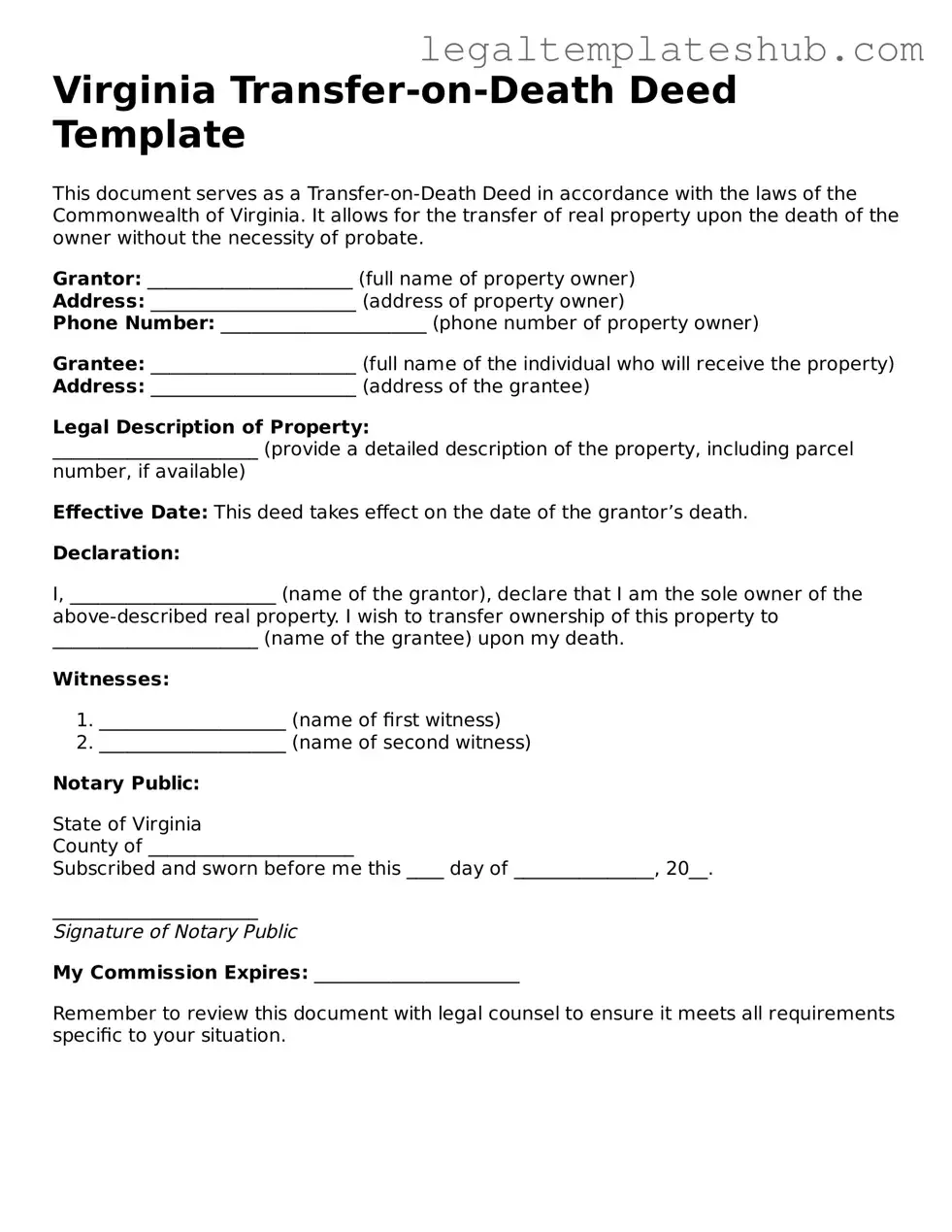Printable Transfer-on-Death Deed Document for Virginia
A Virginia Transfer-on-Death Deed form allows property owners to designate a beneficiary who will receive their real estate upon their death, bypassing the probate process. This straightforward legal tool can simplify the transfer of property and ensure that your wishes are honored. To get started, fill out the form by clicking the button below.
Access Editor
